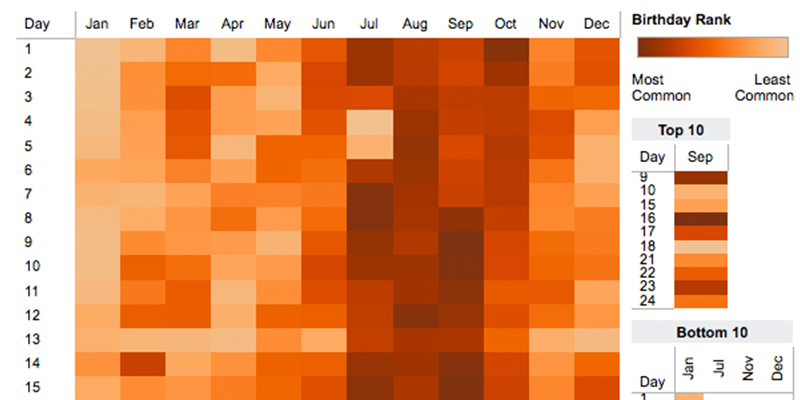What would you do if a large segment of your B2C mailing list never opened your emails?
Would you keep emailing the list? Do you delete these subscribers and move on?
This was a problem my friends at Invino experienced at their ecommerce wine shop — a segment of stale B2C subscribers who didn’t open (and therefore didn’t click, share or convert). They asked me to help turn them into paying customers.
Since email service providers (ESPs) like Mailchimp and SailThru charge by the size of your audience, Invino was paying a significant amount of cash for low-quality prospects who weren’t opening emails.
While this may sound trivial for small lists (< 50k subscribers), when scaled into the 100s of thousands, a few things happen:
- The software you need to manage 500,000 subscribers is very different than 5,000 subscribers.
- New paid tools attach as dependencies (ie list scrubbing APIs, CRMs, marketing automation, etc).
- High volume email platforms are a lot more expensive than small business / startup offerings.
And even if money isn’t a concern, you’ll still have issues with deliverability (stale subscribers marking ‘spam’ instead of kindly unsubscribing), cohort analysis, lead scoring, etc.
There is no benefit to a large mailing list that doesn’t engage with your content.
Here’s a screenshot from Invino’s SailThru dashboard:

My task was to turn 78,000 completely stale sign ups (defined by those who hadn’t opened an email in the past 90 days) into sales.
Below is a recap of my approach, key learnings, and how you can apply it in your business.
tl;dr – we emailed our stale subscribers ‘Happy Birthday’
Inspired by The Birthday Paradox, an unintuitive (but statistically accurate) assumption that in a room of just 23 people, 2 folks are likely to share the same birthday. Similar logic could be applied to a group of email subscribers.
Theory:
IF we email a large group of unactivated subscribers “Happy Birthday,” THEN an unusually large # of them are likely to have recently had or will have a birthday.
Theory extended:
… Who doesn’t offer the benefit of the doubt when you’re wishing them a happy birthday?
Theory further extended:
… For those whose Birthday isn’t close, maybe they’ll also see the humor in the approach and know we care 🙂
Thus, the final subject line:
Happy [belated] Birthday!
This gave us the flexibility to be ‘off’ by a few days (weeks? months?), yet score big in case it really is their birthday.
For a list of this size, the math works out that we likely emailed nearly 840 people whose birthday was within +/- 1 day of our message.
How do I know this?
According to this interactive study, the probability of a May birthday for a random group of people is about 10.8%. Since we emailed 78,000 people, we expected 8,000 to be within their birthday month and around 840 birthdays within a couple days of our message.
If we go a little bit deeper with the data, and include for variance between days of the month, the final number of projected stale subscriber birthdays between May 17-19 is 640 people.
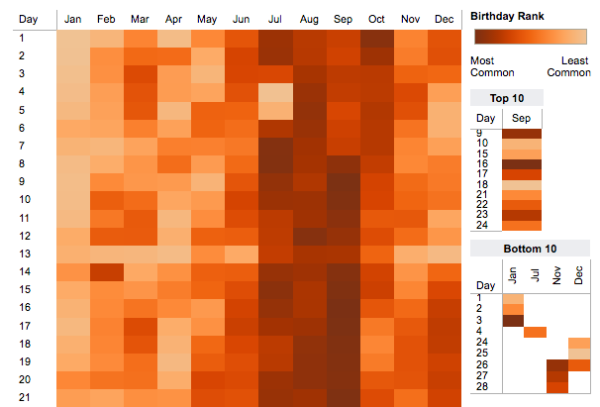
My results?
470+ warm replies. (77% response rate from the projected birthdays during the 3-day span of our message)
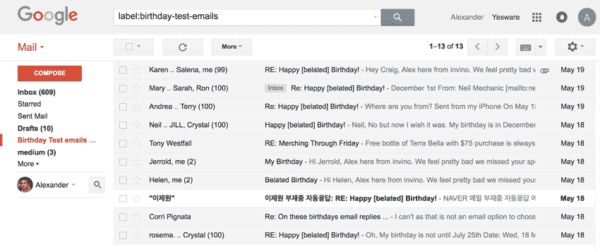
Not expecting this level of response, we sent the emails on behalf of a soon-to-be unhappy camper on the team, Neil.
Meet Neil.

Already busy with his own stuff, we did a quick email migration to our friend on the marketing team, Alexander.
Within a few hours we all were slinging promo codes and wine recommendations to users who never clicked, opened, bought, or converted. Those helpless stale subscribers were being flipped upside down.
At the end of business, we directly tracked $3,386 in sales.
Here’s how we did it.
Below is an exchange from this campaign, and there are dozens more just like it:
Email #1
Generic cold outreach
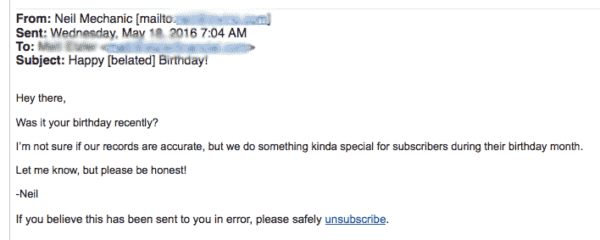
Email #2
First reply from prospect
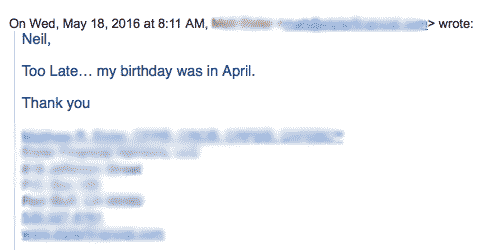
Email #3
First reply from wine team, contains a CTA
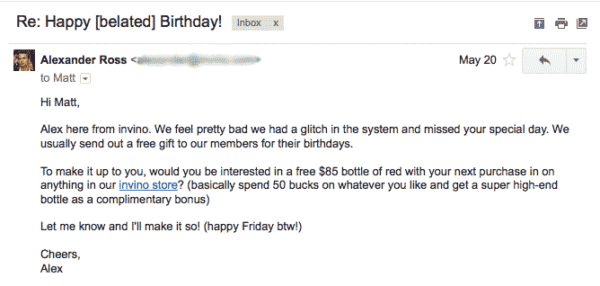
Email #4
Reply from [brand new] customer
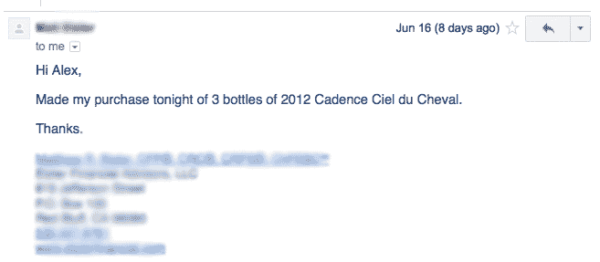
SCORE.
Key learnings
- Don’t talk about your company, talk about your customer
- Everybody has an ego. Wishing someone a happy birthday is a great way to stoke ego without knowing them personally
- This strategy isn’t repeatable — at best you can do it once per year
If you run an ecommerce store and decided to try something like this, I’d love to hear about it.
